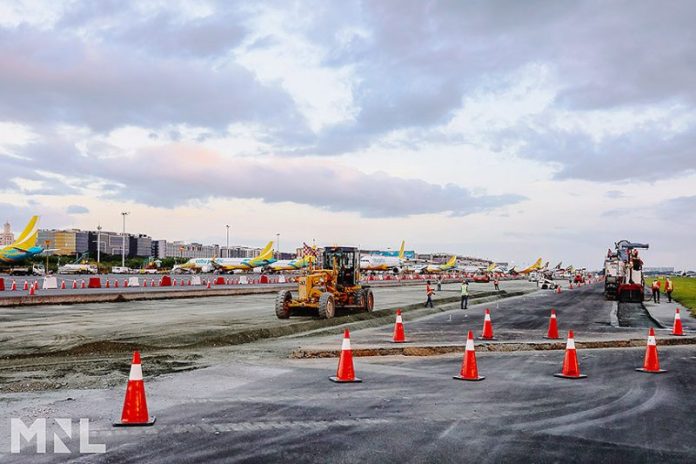-
The Manila International Airport Authority is upgrading the Ninoy Aquino International Airport taxiway to boost air travel efficiency
-
The flexible pavement of the 1,748-kilometer “Taxiway November” will be replaced with rigid concrete
-
Once the upgrade is complete, the runway will accommodate all types of aircraft, including wide-body planes from international carriers at NAIA Terminal 3
The Manila International Airport Authority (MIAA) is upgrading the Ninoy Aquino International Airport (NAIA) taxiway to boost air travel efficiency.
In a statement, MIAA said the flexible pavement for the 1,748-kilometer “Taxiway November” will be replaced with rigid concrete, facilitating the accommodation of various aircraft, particularly wide-body planes from international carriers at NAIA Terminal 3.
Taxiway November, positioned as the inner taxiway of NAIA Terminal 3, runs parallel to Taxiway Delta and Runway 13/31. It serves aircraft operating at NAIA Terminals 3 and 4, as well as general aviation.
The upgrade is divided into three to four phases, starting with a 400-meter section for completion in 16 months, with a target finish in 2025. The phased approach ensures continuous operations at NAIA Terminal 3.
Post-completion, MIAA will continue with the expansion of Taxiway Juliet in front of NAIA Terminal 2, parallel to Runway 13/31, Taxiway November, and Taxiway Delta. The extension will reach NAIA Terminal 4’s apron, reducing traffic at Terminal 3.
Following this, a project to upgrade Taxiway Delta, NAIA Terminal 3’s main taxiway, will be initiated. Similar to Taxiway November, the pavement will be replaced with rigid concrete.
This sequential approach allows aircraft to divert through Taxiway Juliet during the rehabilitation of Taxiway Delta.
MIAA assistant general manager for Engineering Antonio Mendoza said upgrading the taxiways with rigid concrete is “better suited for wide-body aircraft” and will reduce pavement repairs caused by the “inevitable deterioration of asphalt.”
“This change benefits not only MIAA but also airlines and passengers, ensuring a continuous flow of flight operations and allowing us to accommodate more flights at Terminal 3,” Mendoza explained.
MIAA officer-in-charge Bryan Co emphasized the upgrades are part of a series, with further developments planned following a geotechnical investigation of NAIA’s runways, taxiways, and aprons.
“The investigation will determine the Aircraft Classification Number and Pavement Classification Number, guiding our subsequent upgrades. This standardized international airport pavement rating system will also assist airlines in choosing suitable aircraft for NAIA,” Co said.
READ: NAIA on-time performance meets international standards





